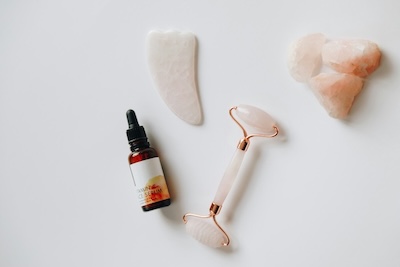The beauty industry is evolving, and clean beauty has become a major focus for those looking to make healthier choices for their skin and the planet. But what exactly does "clean beauty" mean, why should we care, and how can you shop for the best clean products? Let’s break it down.
What Is Clean Beauty?
Clean beauty refers to skincare, makeup, and hair care products made without harmful or questionable ingredients. Unlike terms like "organic" or "natural," which can be misleading, clean beauty prioritizes safety, transparency, and non-toxic formulations. Brands committed to clean beauty avoid ingredients like parabens, phthalates, synthetic fragrances, and sulfates—many of which have been linked to skin irritation, hormone disruption, or environmental harm.
Clean beauty also goes beyond just ingredient lists. Many clean beauty brands focus on sustainable sourcing, cruelty-free testing, and eco-friendly packaging to minimize their impact on the planet.
Why Does Clean Beauty Matter?
Our skin is our largest organ, and what we apply to it can be absorbed into our bodies. Traditional beauty products often contain chemicals that have potential long-term health effects. While not all synthetic ingredients are bad, many common beauty additives have been linked to skin irritation, hormone disruption, and even toxicity with prolonged exposure.
Beyond personal health, clean beauty is also better for the environment. Many conventional products contain ingredients that pollute waterways, disrupt ecosystems, and contribute to plastic waste. Choosing clean beauty means supporting brands that prioritize ethical sourcing, recyclable packaging, and sustainable production.
How to Shop for Clean Beauty
With the rise of clean beauty, many brands now market themselves as "clean" without real transparency. Here’s how to make informed choices:
- Read Ingredient Labels – Look out for known irritants and toxic ingredients like parabens, synthetic fragrances, sulfates, and formaldehyde-releasing preservatives.
- Look for Certifications – Seals like EWG Verified, Leaping Bunny, and USDA Organic can help identify trustworthy brands.
- Prioritize Transparency – Clean beauty brands should clearly list their ingredients and sourcing practices.
- Choose Sustainable Packaging – Opt for brands that use glass, refillable, or biodegradable packaging to reduce waste.
- Research Brand Ethics – Many clean beauty brands also commit to fair trade, cruelty-free testing, and giving back to environmental causes.
Clean beauty is about making conscious, informed choices that benefit both your health and the planet. By understanding what to look for, you can build a beauty routine that is both safe and sustainable.
Cover Photo by Nataliya Melnychuk
.gif)





.gif)



